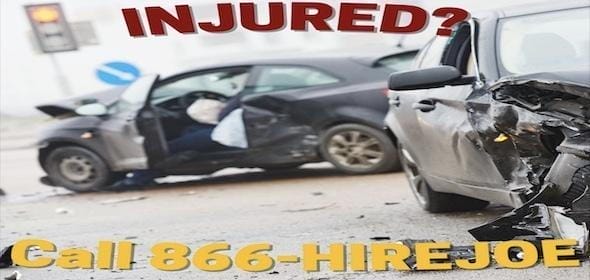You need to know what serious impairment of body function is under Michigan’s auto law. If you have been injured in a car accident, your experienced car accident lawyer will explain that you need to prove that you suffered a serious impairment of body function in order for you to recover pain and suffering compensation from the at-fault driver.
In order to win in an auto negligence lawsuit on your claim against the at-fault driver for pain and suffering compensation, you will need to prove: (1) the at-fault driver was negligent; (2) you suffered injuries; and (3) the at-fault driver’s negligence caused your injuries. (M Civ JI 36.15).
What is a serious impairment of body function?
Michigan’s no fault law reform changed the meaning of serious impairment of body function. This legal test creates an injury threshold that a car accident victim must meet in order to recover pain and suffering compensation, which is also known as “noneconomic loss” damages. MCL 500.3135(5).
What law means serious impairment of body function is?
Michigan law allows an auto accident crash victim to recover pain and suffering compensation – or “noneconomic loss” damages – from the at-fault driver that caused the crash only if the victim suffered the following:
(a) It is objectively manifested, meaning it is observable or perceivable from actual symptoms or conditions by someone other than the injured person.
(b) It is an impairment of an important body function, which is a body function of great value, significance, or consequence to the injured person.
(c) It affects the injured person’s general ability to lead his or her normal life, meaning it has had an influence on some of the person’s capacity to live in his or her normal manner of living. “Although temporal considerations may be relevant, there is no temporal requirement for how long an impairment must last.” This means that the injury does not have to be permanent. This examination is inherently fact and circumstance specific to each injured person, must be conducted on a case-by-case basis, and requires comparison of the injured person’s life before and after the incident. (“Michigan Legislature – Section 500.3135”).
Michigan’s No-Fault law enacted back in 1973, initially simply required that an auto crash victim need to only prove a “serious impairment of body function” to recover pain and suffering compensation. Over the years the definition has been changed by the judiciary and legislature.
The new Michigan no fault law went into effect in 2019, which codified the 2010 ruling in McCormick v. Carrier, the Michigan Supreme Court overruled Kreiner’s misinterpretation of the “serious impairment of body function” threshold law, emphatically rejecting both the interpretation of the law, reasoning and ruling of the Kreiner court:
“We hold that Kreiner v. Fischer . . . was wrongly decided because it departed from the plain language of MCL 500.3135, and is therefore overruled . . . Because the Kreiner majority created ambiguity where there was none, and crafted a statutory interpretation that is, in effect, a judicially constructed house of cards, we hold that it incorrectly interpreted [the law]. The Kreiner majority aggravated this error, and departed even more dramatically from the statutory text, by providing an extra-textual ‘nonexhaustive list of objective factors’ to be used to compare the plaintiff’s pre- and post-incident lifestyle . . . Because the factors adopted by the Kreiner majority are not based in the statutory text, and this Court’s role is to apply the unambiguous statutory language, not improve it, we hold that the majority erred by adopting them.”
The standard has been lowered because it only requires “some” showing of your change in lifestyle.
What Is Objectively Manifested Serious Impairment of Body Function?
Michigan’s 2019 No-Fault auto law explains that a “serious impairment of body function” is “objectively manifested” when the impairment “it is observable or perceivable from actual symptoms or conditions by someone other than the injured person.” See MCL 500.3135(5)(a).
What Is An Important body function must be seriously impaired?
Michigan law provides the definition that the crash victim suffers an objectively manifested impairment “of an important body function, is a body function of great value, significance, or consequence to the injured person.” (MCL 500.3135(5)(b)). This can be movement of the neck, back, hand, foot, knee, shoulder, elbow, head, finger, wrist, leg, arm, or virtually any other important body function of great value, significance, or consequence to the injured person. This creates a subjective standard specific to the injured car accident victim.
When does objectively manifested impairment of a body function affect a person’s normal manner of living?
Michigan new no fault law defines “general ability to lead his or her normal life” when the crash victim’s injury “has had an influence on some of the person’s capacity to live in his or her normal manner of living.” MCL 500.3135(5)(c). The word some is not defined so the courts are required to apply the standard dictionary definition for some, which general an unspecified number. This is good for auto accident victims because historically there has been confusion and inconsistencies about how much influence had to have on a person’s life. The law also specifically states that “there is no temporal requirement for how long an impairment must last.” (MCL 500.3135(5)(c)).
The new no fault law has a lower standard and clarifies that the necessary showing about how an impairment affects a victim’s manner of living. The new law is also clear that the manner of living “is inherently fact and circumstance specific to each injured person, must be conducted on a case-by-case basis, and requires comparison of the injured person’s life before and after the incident.” (MCL 500.3135(5)(c)). Again, this standard is favorable to the injury victim because the courts are not authorized to decide the facts of any case in jury trial cases.
If You Think You Suffered A Serious Impairment of Body Function? Call Us Expert Michigan Auto Law Lawyers For A Free consultation
If you believe you or a family member or friend suffered a serious impairment of body function in an automobile crash and you have questions about your legal rights to pain and suffering compensation from the at-fault driver’s insurance, you can call us toll free anytime 24/7 at (866) 447-3563 for a free consultation with one of our experienced car crash attorneys. Our experienced auto accident attorneys can help you through our contact form.


